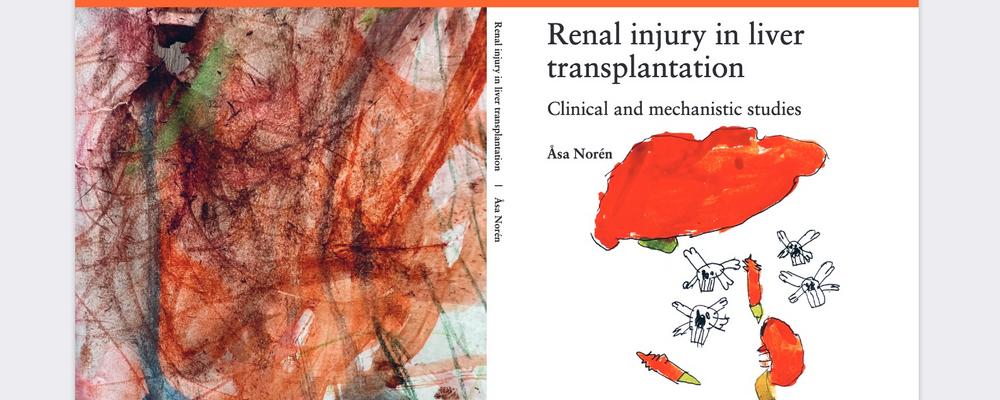Link directly to the doctoral thesis in GUPEA
The research in the thesis is about how kidney function is affected during a liver transplant. About patient- and donor-related risk factors both before, during and early after the procedure. Åsa Norén has also looked at the mechanisms of how and when the kidneys are damaged in connection with the transplant.
ABSTRACT
Background: Renal injury in liver transplantation (LT) is common and presents both as early and late insufficiency. These conditions are interconnected and have substantial impact on the long-term outcome. Multiple factors are involved in its development, often categorized as pre-, intra-, and post-LT risk factors, and comprise both donor and recipient characteristics. Recently, the transplant procedure and liver graft itself have been suggested as important contributors to the immediate acute kidney injury (AKI) post-LT, with hepatic ischemia-reperfusion injury being assigned a causative role for early AKI development. However, the mechanisms by which the liver graft affects remote organs, and by which the renal injury evolves, remain obscure. The current thesis aimed to explore renal injury in LT, from characterization of donor and recipient risk factors, via description of frequency and severity of post-LT renal injury, to in-depth analyses of liver and renal subcellular mechanisms involved in the process. Finally, we explored the role of hypothermic oxygenated machine perfusion (HOPE) of liver grafts in subsequent AKI development.
Methods: Papers I-III originate from data collected during a prospectively conducted study in Gothenburg, comprising of 27 LT patients and their corresponding renal and liver biopsies. Paper IV was a retrospective analysis of the first HOPE treated LTs in our centre, and historic controls. Paper I analyzed the frequency of early post-LT renal injury, its evolution and risk factors. Using quantitative proteomics, Paper II studied the intraoperative proteomic profiles of liver grafts of patients with and without AKI. Paper III explored renal proteome alteration patterns during LT, in patients developing AKI compared to those maintaining pre-LT renal function. Paper IV examined the impact of HOPE for older donor livers, on early post-procedure AKI.
Results: Liver transplantation associated with a high risk of substantial decline in measured glomerular filtration rate (mGFR) within days, and AKI within hours of LT, irrespective of pre-LT mGFR, absence of pre-transplant renal pathology, and before introduction of calcineurin inhibitors. Early and late renal injury correlated strongly. Liver graft proteomic profile of LT recipients with AKI differed significantly from that of patients without AKI. Differences were dominated by inflammation and early activation of innate immunity. The same group also presented complex intraoperative renal proteomic alterations, characterized by inflammation, with extracellular matrix-, and mitochondrial modifications. End-ischemic HOPE of liver grafts from older donors, did not reduce the frequency or severity of early post-LT AKI.
Conclusion: Liver transplantation heavily affects post-LT renal function, with substantial consequences for long-term, renal outcome. This thesis uncovered new mechanistic insights into the global proteomic alterations of livers transplanted to recipients developing early AKI. Moreover, our results reveal apparent proteomic renal changes within minutes after liver graft reperfusion. In the absence of overt hemodynamic alterations, we suggest hepatic ischemia-reperfusion injury as the causative event for remote organ, renal injury. HOPE-treatment of high-risk liver grafts of elderly donors did not mitigate neither ischemia-reperfusion injury, nor remote AKI.
